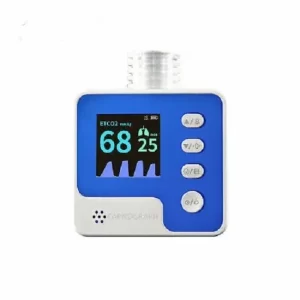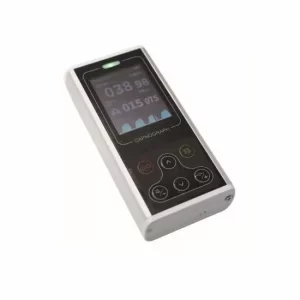Capnograph is the device that records and shows the graphical display of waveform of CO2. It helps to assess carbon dioxide levels in blood and tissue. Capnography is a noninvasive technique that can be used to monitor patients with respiratory problems, like asthma or COPD. A capnograph is a device that monitors the level of carbon dioxide in the blood. A capnograph is important for patients who are under anesthesia to ensure they are receiving enough oxygen. The capnograph can also be used to monitor breathing patterns and lung function. Capnographs are used to measure carbon dioxide levels in the blood. This information is used to help ensure that patients receive enough oxygen during surgery. Capnographs are a vital piece of equipment in any anesthesiology department.
Capnography is the recording and displaying of waveforms in CO2. This device can help doctors and nurses see how CO2 levels change over time, which can help them diagnose problems faster and more effectively. Capnograph is fast, accurate, and easy to use, making it a valuable tool in any medical setting. Capnograph is a reliable and non-invasive method of measuring carbon dioxide levels in the blood. Capnograph is used for patients undergoing anesthesia to ensure that the patient receives enough oxygen.
Capnograph Uses:
- A capnograph is a device used to measure the amount of carbon dioxide in the blood.
- Capnography is the measurement of carbon dioxide in exhaled breath.
- The capnograph measures two types of carbon dioxide: end tidal and alveolar.
- End tidal carbon dioxide is the concentration of carbon dioxide in the air expired at the end of expiration.
- Alveolar carbon dioxide is the concentration of carbon dioxide in arterial blood.
- A capnograph is a device that measures the concentration of carbon dioxide in the blood.
- This information can be used to help diagnose and treat various medical conditions.
- The capnograph has several advantages over other methods of measuring carbon dioxide levels.
- Capnograph is quick and easy to use, and it provides a continuous reading of the carbon dioxide levels.
- Capnograph allows doctors to track the progress of treatment and make changes as needed.
- The capnograph also helps to prevent complications caused by high or low carbon dioxide levels.
Different types of capnograph:
There are many
types of capnograph, and it's important to know which one best suits your needs when shopping for one. Here's a quick reference guide to the various types of capnograph available.
Handheld capnograph:
This capnograph is a device that helps measure the level of carbon dioxide in a person's blood. This handheld capnograph is especially helpful for those who are critically ill and need to be closely monitored. The handheld capnograph has many features that help make it an essential tool for critical care. It is small and lightweight, making it easy to transport. It also has a long battery life, so it can be used for extended periods of time. Additionally, the handheld capnograph is very accurate and provides quick results. This allows caregivers to quickly assess the patient's condition and make necessary adjustments.
Portable capnometer:
A capnograph is a device that is used to measure the concentration of carbon dioxide in a person's exhaled breath. This information can be used to help assess a person's level of consciousness and to determine if they are suffering from a breathing emergency. Some benefits of using a capnograph include the ability to quickly and easily assess a patient's condition, the portability of the capnograph, and the fact that it does not require any special training to use.











